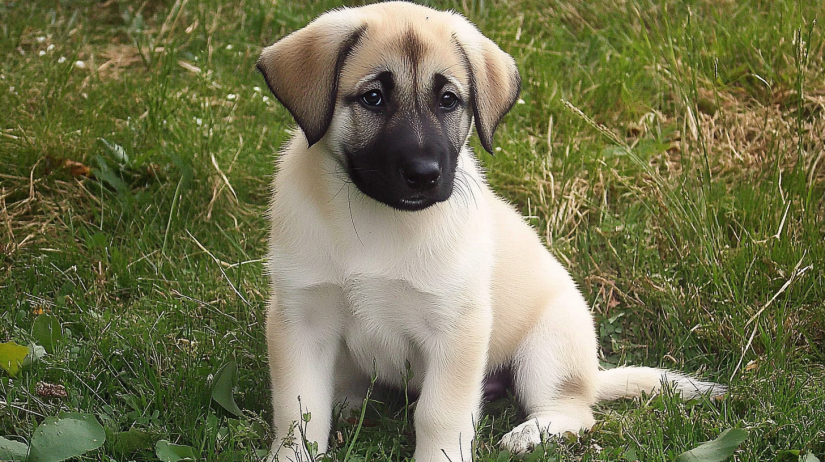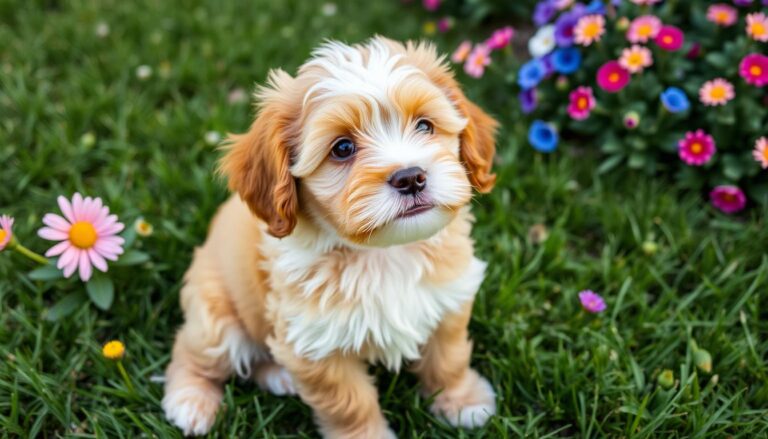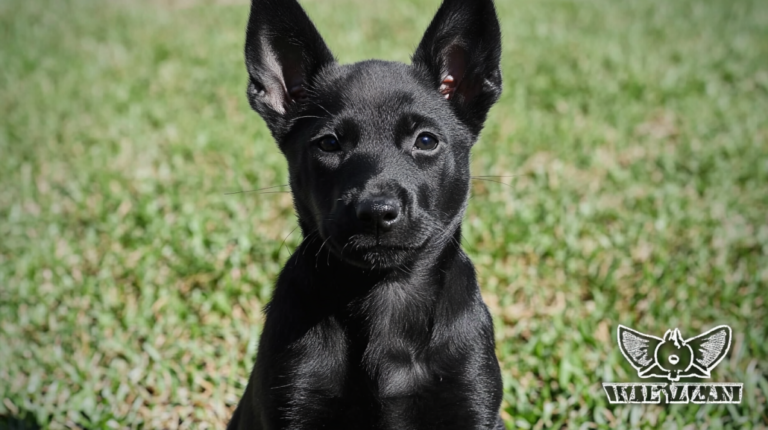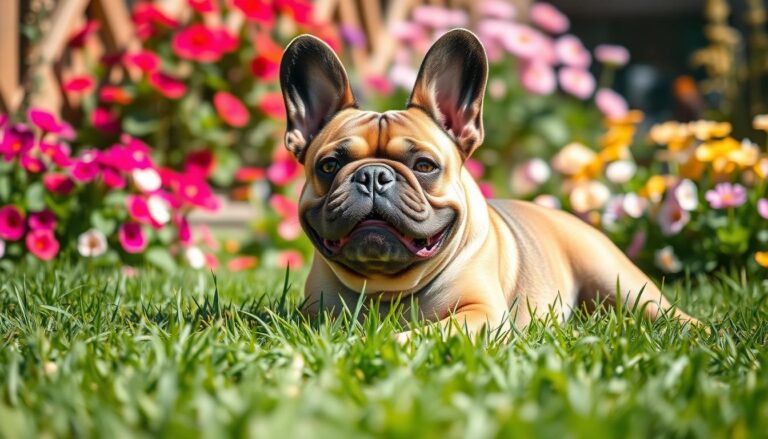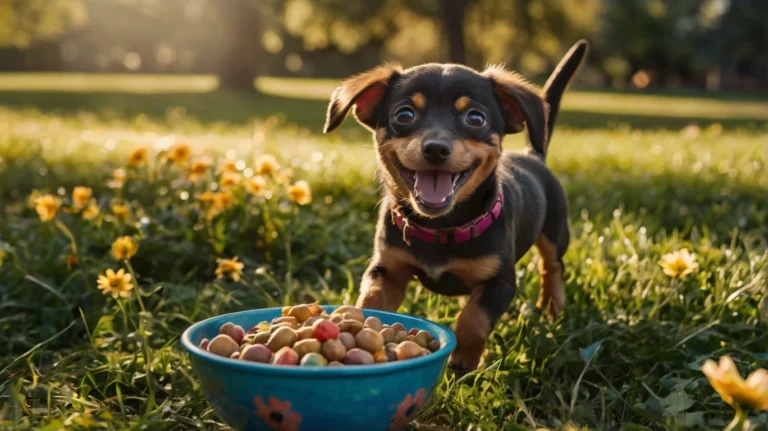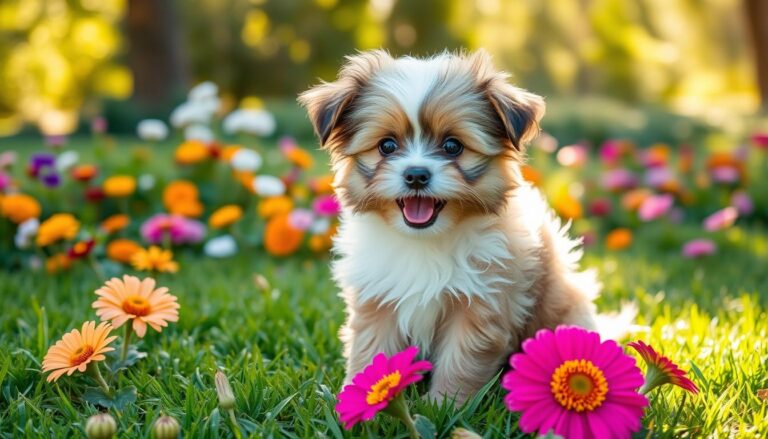Anatolian Shepherd Puppy: 7 Powerful & Positive Insights
Introduction
You open your door, and a tiny fluff ball bounds over to greet you—albeit a fluff ball destined to weigh over 100 pounds one day. That’s what life may look like with an anatolian shepherd puppy: a sweet, unassuming pup that, in time, matures into a powerful, imposing guardian. Originally bred to protect livestock from predators in the rugged terrains of Turkey, Anatolian Shepherds bring centuries of natural vigilance, loyalty, and independence into your home.
Perhaps you’ve seen these majestic dogs towering gracefully in open fields or read about their unyielding devotion to family. Or maybe you need a dependable guardian for your farm or rural property. Whatever your reasons, adopting an anatolian shepherd puppy is not a casual decision. They demand responsible ownership and thorough preparation to ensure a harmonious, fulfilling relationship for both dog and human. Let’s delve into the breed’s captivating history, defining traits, training methods, and more to help you make an informed decision about bringing this remarkable puppy into your life.
A Glimpse Into History & Breed Origins
Roots in Turkey
The Anatolian Shepherd traces its lineage to central Turkey, where they likely emerged from ancient mastiff or large flock-guardian dogs. For centuries, local farmers relied on these dogs to guard flocks of sheep and goats against predators such as wolves, bears, and even lions. Over time, the breed developed a keen protective instinct, stamina, and the ability to function independently over large expanses of land.
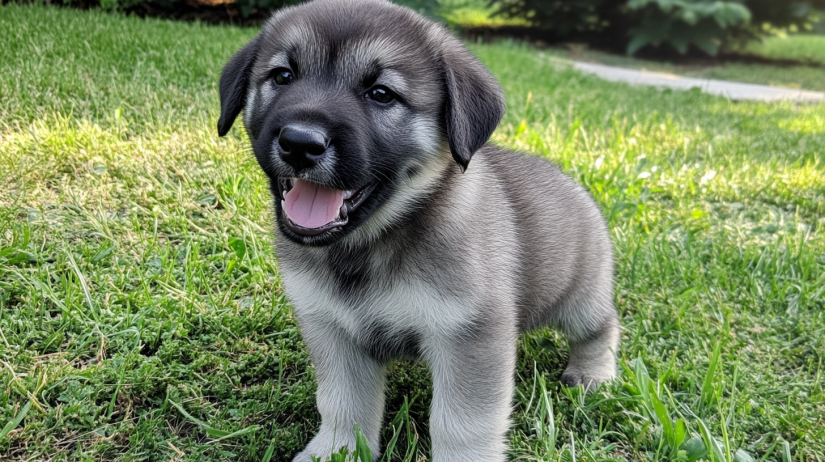
Recognition Worldwide
Though primarily Turkish in origin, the breed caught international interest in the 20th century. The American Kennel Club (AKC) officially recognized the Anatolian Shepherd in 1996, and today it is prized by landowners and homesteaders around the globe for its unwavering guardian instincts. While the breed’s primary historical task remains livestock protection, modern-day families also value Anatolian Shepherds for their loyal, watchful presence at home.
Working Heritage
At their core, anatolian shepherd puppy bloodlines revolve around a self-sufficient work ethic. They take a “patrol first, rest later” approach, devoting themselves to safeguarding their territory and “flock”—which could be livestock, other pets, or human family members. These inherent instincts shape how you train, exercise, and interact with your pup on a daily basis.
Physical Characteristics & Growth
Size and Build
- Weight: Adult males often weigh 110–150 pounds, females 80–120 pounds
- Height: Typically 27–29 inches (males) and 25–27 inches (females) at the shoulder
- Coat: Short to medium length, dense undercoat, and a coarse topcoat that may be fawn, pinto, or brindle, sometimes accompanied by a black mask
Don’t let the adorable eyes of your anatolian shepherd puppy fool you—these dogs grow rapidly. Expect your puppy to gain several pounds weekly in its formative months. By age one, they may already be close to adult height, though their bulk and musculature continue to develop for another year or two.
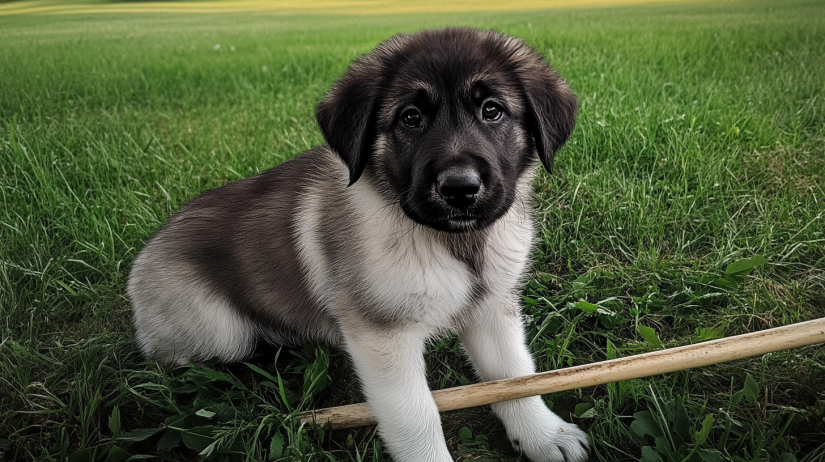
Table: Puppy Growth Stages (Approximate)
Below is a general timeline for an anatolian shepherd puppy. Individual development may differ based on genetics, nutrition, and environment.
| Age | Estimated Weight (Males) | Estimated Weight (Females) | Milestones |
|---|---|---|---|
| 8 Weeks | 15–25 lbs | 13–20 lbs | Transition to new home, basic bonding & crate intro |
| 4 Months | 40–60 lbs | 35–50 lbs | Rapid growth, teething, begin basic commands |
| 6 Months | 65–85 lbs | 55–75 lbs | May look gangly, intensify socialization |
| 1 Year | 90–120 lbs | 70–95 lbs | Approaching adult height, refine training |
| 2 Years | 110–150 lbs | 80–120 lbs | Full mature build, mental maturity emerges |
Personality and Temperament
Independent Yet Devoted
One of the most striking attributes of an anatolian shepherd puppy is its inborn independence. Unlike breeds bred to be strictly companion animals, Anatolians are adept at making decisions on their own. They think critically about perceived threats, weigh whether it warrants a reaction, and often act without waiting for human input. That said, an anatolian shepherd puppy also develops a strong bond with family, expressing gentle affection and unwavering loyalty.
Protective Instincts
From a young age, an anatolian shepherd puppy will demonstrate watchful, sometimes territorial behavior. They think of your home and yard as their personal space. Barking at unfamiliar sights or sounds is common, and while beneficial for security, it can be overwhelming in suburban or urban settings unless properly managed. Early training and proper socialization are key to honing those instincts in a respectful, controlled manner.
Calm and Confident
Despite their massive size, adult Anatolians often carry themselves with quiet confidence. They don’t usually become hyperactive or destructive if they have adequate space and mental engagement. Instead, they patrol or rest in vantage points, calmly observing their environment. However, don’t be surprised if your anatolian shepherd puppy tries to test boundaries or exhibits minor rebellious streaks during adolescence—consistent leadership helps channel that independent spirit constructively.
Bringing Home an Anatolian Shepherd Puppy
Preparing Your Environment
Before your anatolian shepherd puppy arrives, ensure your living situation aligns with their needs:
- Spacious Yard: A large, securely fenced outdoor area is ideal. These dogs thrive with room to roam and patrol.
- Secure Perimeter: Because of their protective instincts, having a solid, tall fence can deter your puppy from wandering or chasing perceived intruders.
- Puppy-Proofing: Anatolian pups are powerful chewers. Lock away chemicals, tuck away cords, and consider using baby gates for off-limits rooms.
Adopting vs. Buying
When deciding how to acquire your anatolian shepherd puppy:
- Reputable Breeder: Look for breeders who perform health checks on hips, elbows, and eyes. They should be transparent about the puppy’s lineage and socialization efforts.
- Rescue Organizations: Occasionally, Anatolians or Anatolian mixes end up in shelters, including those focusing on livestock guardian breeds. Adoption can be a wonderful way to give a dog a second chance.
- Beware of Scams: High demand for large guardian dogs can attract unscrupulous breeders or online scams. Thoroughly research any source before sending money.
First Days and Bonding
Your new anatolian shepherd puppy will need time and patience to adjust:
- Settle Them In: Provide a cozy crate or dog bed where they can retreat if overwhelmed.
- Routine Introduction: Feed, walk, and play at consistent times to create stability.
- Gentle Socializing: Start meeting close family members or other pets calmly. Keep interactions brief and positive.
Diet & Nutrition
Growth and Joint Care
Because an anatolian shepherd puppy grows quickly, feeding them a quality, large-breed puppy formula is crucial. The right diet helps moderate growth rates and prevents stress on developing joints. Hip dysplasia and elbow dysplasia are potential concerns, so balanced nutrition that avoids rapid weight gain is essential. Consult your vet about the appropriate brand, portion sizes, and feeding schedule.
Feeding Schedule
- Ages 2–6 Months: 3–4 meals a day
- Ages 6–12 Months: 2–3 meals a day
- Ages 12+ Months: Transition to adult formula, typically 2 meals a day
Monitor your anatolian shepherd puppy’s body condition. You should be able to feel ribs under a slight layer of fat without prominent protrusion. Overfeeding can escalate joint issues, while underfeeding may compromise their overall development.
Treats and Supplements
Many owners use treats for training, but portion control is key. Look for healthy options like lean protein, small bits of cheese, or commercial training treats labeled for large-breed pups. Before considering supplements such as glucosamine or fish oils, consult your veterinarian to ensure they’re appropriate for your puppy’s age and health status.
Exercise & Activity
Avoid Overexertion
It’s tempting to show off your growing anatolian shepherd puppy by taking them on long hikes or runs, but excessive forced exercise can hurt developing joints. Gradually build up endurance and respect the “5-minute rule” often recommended for large-breed puppies: approximately 5 minutes of structured exercise per month of age (twice daily). Of course, supervised free play in a safe yard can allow your puppy to self-regulate activity.
Mental Stimulation
Anatolian Shepherds are problem solvers. Boredom may lead them to creative, undesirable behaviors like digging or fence-climbing. Keep your anatolian shepherd puppy engaged with:
- Puzzle Toys: Hide treats in interactive toys for them to discover.
- Obedience Drills: Short sessions that reinforce basic commands while stimulating their minds.
- Guardian Role: Provide vantage points, letting them “survey” their domain.
Social Walks & Adventures
Light leash walks and visits to new environments help your puppy adapt to different sights, sounds, and people. Avoid overly busy, chaotic areas at first. Gradual exposure to mild hustle-bustle fosters confidence and reduces reactivity as your puppy grows into an imposing adult.
Training & Socialization
Early Lessons
For an anatolian shepherd puppy, consistent, gentle training from day one prevents stubbornness or aggression:
- Positive Reinforcement: Reward-based methods (treats, praise) encourage cooperation without crushing their independent spirit.
- Basic Commands: Sit, Stay, Come, Down lay the groundwork for good manners and safety.
- Short Sessions: A few 5-minute sessions throughout the day keep your puppy focused.
Housebreaking and Crate Training
- Frequent Breaks: Take your puppy outside immediately after naps, meals, and play.
- Establish a Routine: Use cues like “go potty” and praise them for success.
- Crate Comfort: A crate or kennel helps manage unsupervised time, fosters a sense of security, and aids in house training.
Addressing Behavioral Challenges
- Guarding Behaviors: Anatolians may be protective over resources (food, toys) or territory. Early training around giving up objects on command, plus supervised interactions with guests, can help moderate overprotectiveness.
- Barking: Alert barking is typical. Teach a cue like “quiet” by calmly praising your puppy when they stop.
- Leash Pulling: Use a front-clip harness or gentle leader. Give your puppy a treat for staying calm while walking by your side.
Socializing with People & Other Animals
An anatolian shepherd puppy can develop wariness if not exposed to diverse experiences, so:
- Invite Friendly Visitors: Keep interactions low-key; let the puppy approach on its own terms.
- Puppy Classes: Controlled group settings can be beneficial, though these classes should account for the puppy’s size and temperament needs.
- Livestock Integration: If your puppy’s job is to guard livestock, carefully introduce them to the herd or flock under close supervision. Calm, positive experiences lay the foundation for a reliable guardian.
Health & Grooming
Common Health Concerns
While generally robust, an anatolian shepherd puppy may face:
- Hip & Elbow Dysplasia: Abnormal joint development leading to pain or lameness. Early screening and careful exercise help reduce impact.
- Bloat (Gastric Dilatation-Volvulus): A life-threatening twisting of the stomach, more common in deep-chested breeds. Feed multiple smaller meals and discourage vigorous activity around mealtimes.
- Eye Issues: Entropion (inward rolling eyelid) or other ocular concerns can occur. Watch for squinting, redness, or discharge.
Regular checkups, vaccinations, and preventative care (parasite control, heartworm prophylaxis) safeguard your puppy’s wellbeing. Organizations such as the American Veterinary Medical Association (AVMA) offer valuable resources on pet health.
Grooming Basics
- Brushing: Anatolians have a thick double coat that sheds, particularly during seasonal “blowouts.” Weekly brushing (daily during heavy shed times) reduces loose hair.
- Bathing: Their coat naturally repels dirt. A bath every few months—unless extremely dirty—usually suffices.
- Nail Trimming: Keep nails short to avoid discomfort or posture issues.
- Ear Checks: Clean ears gently if there’s debris or wax build-up.
- Teeth Maintenance: Regular brushing or dental chews help prevent plaque build-up.
Dental & Nutritional Supplements
As large dogs, Anatolians benefit from maintaining robust dental health. Consider vet-approved dental treats, water additives, or occasional brushings. If recommended by your veterinarian, joint supplements (like glucosamine) may support bone health, particularly important for a growing anatolian shepherd puppy.
Anatolian Shepherd as a Family Dog or Livestock Guardian
Role as a Family Pet
If you plan to keep your anatolian shepherd puppy primarily as a companion:
- Clear Boundaries: They must learn that not every visitor is an intruder—socialize them with friends, extended family, and friendly strangers.
- Structured Daily Routine: Provide a blend of mental and physical stimulation, plus downtime to rest.
- Steadfast Loyalty: With patience, your pup will form deep attachments to household members, often acting as a gentle giant around kids if raised and managed properly.
Role as a Livestock Protector
Anatolians are famously adept at protecting livestock like sheep, goats, or even poultry:
- Gradual Introduction: Let your anatolian shepherd puppy bond with the livestock under supervision.
- Minimize Distractions: Limit unsupervised free-roaming early on so they don’t wander away from the herd.
- Mentoring: Sometimes pairing your puppy with an experienced older livestock guardian dog speeds up learning.
Urban vs. Rural Living
- Urban: While not impossible, city living with an anatolian shepherd puppy demands extra vigilance to curb nuisance barking, reactivity, and restlessness.
- Rural/Suburban: More conducive to their natural instincts, but ensure robust fencing and supervision to prevent territorial overreach or confrontation with neighbors.
Real-Life Stories
Case Study 1: Luna, the Gentle Guardian
Luna was an anatolian shepherd puppy raised in a suburban family home. Her owners provided consistent obedience training and took her to quiet dog parks for socialization. Despite living in a smaller yard, Luna adapted well, calmly watching over her toddler “flock” in the yard. The family credits her impressive self-control to early training emphasizing calm behavior around children.
Case Study 2: Max, the Dedicated Livestock Defender
Max’s owners adopted him specifically for farm protection duties. Under the guidance of an older Anatolian and supervised training sessions, Max formed a strong bond with the goats he was meant to protect. By one year old, he was effectively warding off coyotes and calmly patrolling the farm. The success story highlights the dog’s natural aptitude for livestock guarding coupled with structured, hands-on mentorship.
FAQs
Below are frequently asked questions about the breed.
Can Anatolian Shepherds thrive in a family setting?
Yes, given early socialization and boundaries. An anatolian shepherd puppy bonds closely with household members. They need firm but fair guidance to manage protective instincts around kids and guests.
Do Anatolian Shepherds adapt well to obedience lessons?
They’re bright yet self-reliant, so training may be challenging. An anatolian shepherd puppy responds best to positive reinforcement. Keep sessions short, focused, and consistent to hold their attention.
What is the ideal activity level for Anatolian Shepherds?
They’re built for steady work rather than constant sprinting. An anatolian shepherd puppy benefits from short, controlled exercise sessions. Balancing mental tasks and free roaming meets their guardian instincts.
Are Anatolian Shepherds prone to excessive barking?
They’re naturally vocal guardians. An anatolian shepherd puppy signals unusual sounds with barks. Early training and social exposure help control this protective habit.
Can Anatolian Shepherds coexist peacefully with other animals?
They can if socialized and supervised. An anatolian shepherd puppy tends to form bonds with companion animals at home. Calm, gradual exposure helps avoid conflicts stemming from territorial instincts.
What is the eventual size of an Anatolian Shepherd?
They grow into massive canines, often 100+ pounds. Your anatolian shepherd puppy will have a big growth spurt in puppyhood. Full maturity is reached around 18–24 months, revealing their formidable build.
Conclusion
Welcoming an anatolian shepherd puppy into your home is like opening the door to a centuries-old legacy of loyalty and protection. These majestic dogs can be steadfast companions for families and exceptional guardians of farmland or livestock. Yet, their naturally strong instincts and considerable size demand purposeful training, structured socialization, and ample space to roam. If you’re up for investing the time and effort into guiding your pup with patience and respect, you can look forward to a bond built on trust, admiration, and mutual devotion.

